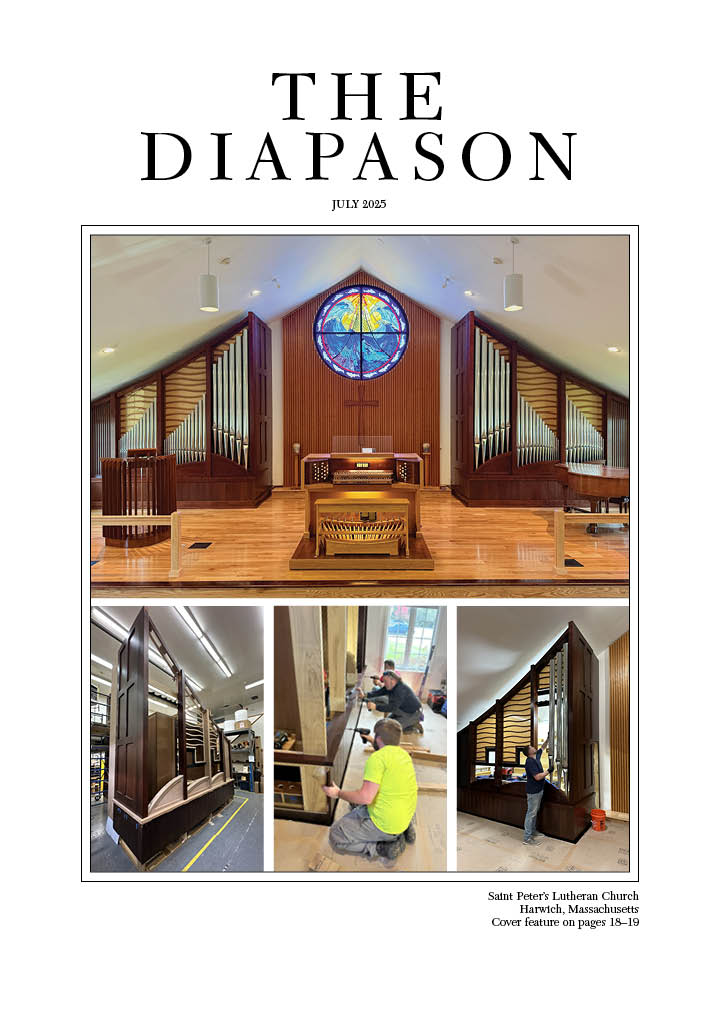CONTACT: Diane Reed 212-602-0813 or Donna Presnell 212-602-9672
THE CHOIR OF TRINITY CHURCH, WALL STREET PRESENTS THE WORLD PREMIERE OF ROBERT D. LEVIN’S COMPLETION OF MOZART’S MASS IN C MINOR, ON HISTORICAL INSTRUMENTS WITH REBEL BAROQUE ORCHESTRA CONDUCTED BY OWEN BURDICK
Sunday, April 2, 2006, 3pm
NEW YORK, February 28, 2006—Trinity Church celebrates the 250th anniversary of Mozart’s birth with the world premiere of Robert D. Levin’s completion of Mozart’s Mass in C Minor, K.427—the Große Messe on historical instruments. The Mass will be performed by The Trinity Choir, with REBEL Baroque Orchestra, conducted by Owen Burdick, on Sunday, April 2, 2006 at 3:00 p.m.
Levin’s heralded reconstruction in 1991 of the Requiem K.626 led to his further examination of Mozart's compositions with the hope of successfully completing another of Mozart’s most significant works. The resulting Great Mass in reconstructed liturgical form completes what Levin believes to be the most significant setting of the Mass between Bach’s Mass in B Minor and Beethoven’s Missa Solemnis. Carnegie Hall, through generous support from The Maria and Robert A. Skirnick Fund for New Works, commissioned Levin to provide this context.
Mozart began work on the composition in 1782, and, though there are several theories, there is no definitive information existing to explain why Mozart left the piece unfinished. One theory suggests that Mozart began the piece as a pact with God that his ailing wife’s health be restored. Once she was healthy he then was commissioned for other works preventing its completion. Levin has further proposed that after the death of Mozart’s first son Raimund Leopold in the summer of 1783, he was unable to return to it.
Levin examined Mozart's surviving sketches from the years 1781 to 1785 in search of music that might have been intended for the work. He discovered material not previously associated with the Mass and found a number of sketches from 1783—the year of the Mass's abandonment—that can plausibly be deemed ideas for movements never executed. The resulting ninety-minute work is fifty percent longer than the version usually performed and includes such reconstructions as the orchestration of the missing voices in the opening chorus from the Credo. “For listeners familiar with the standard performing versions of the Mass,” Levin says, “seven of the nineteen movements will be new…so there will be many surprises.”
According to Owen Burdick, director of music at Trinity Church and St. Paul’s Chapel, “Levin’s reconstructed work is a significant contribution to our understanding of Mozart’s music.
As with his completion of the Requiem, Levin gives us a brilliant glimpse of the intended grandeur of this sacred masterpiece. Imagine, restoring the arms to the Venus de Milo!
About Robert D. Levin
Robert D. Levin is an internationally acclaimed concert pianist and harpsichord virtuoso, composer, lecturer and musicologist. His completions of several unfinished Mozart works, including the Requiem in D minor and Große Messe in C minor, are considered his most important achievements. He has also completed missing orchestral parts to five movements of Cantatas by Johann Sebastian Bach.
About REBEL Baroque Orchestra
The New York-based Baroque ensemble REBEL has earned an impressive international reputation, enchanting diverse audiences by their unique style and their virtuosic, highly expressive and provocative approach to the Baroque and Classical repertoire. REBEL is currently in residence at Trinity Church collaborating with Trinity Choir in works ranging from the cantatas of Bach to the major oratorios of Handel, Bach, Mozart, and Haydn.
Trinity’s web site, www.TrinityWallStreet.org, is a premier resource throughout the Anglican Communion for faith formation, with weekly online telecasts of concerts, liturgy, and special events.
For more information on Trinity Church-St. Paul’s Chapel, go to www.TrinityWallStreet.org.
About Trinity Church-St. Paul’s Chapel
The Parish of Trinity Church, established in 1697, has a diverse congregation drawn from the New York region and offers 18 worship services during the week as well as daily interdenominational prayers for peace at St. Paul’s Chapel. The church and the chapel in Lower Manhattan attract over 1.8 million visitors annually.
The parish’s outreach programs in lower Manhattan include John Heuss House, a 24-hour drop-in center; St. Margaret’s House, government-supported housing for the elderly and disabled; full childcare services for children six months to five years in the financial district through Trinity Preschool and Nursery; a transitional men’s shelter at St. Paul’s Chapel; and an exhibit at St. Paul’s Chapel, “Unwavering Spirit: Hope & Healing at Ground Zero” that focuses on its unique ministry to 9/11 workers during the recovery efforts at the former World Trade Center site. The parish has a strong musical tradition, with a family choir, a professional choir with CD recording contracts, and a popular twice-weekly concert series.
In addition, it supports the Episcopal Church locally and the worldwide Anglican Communion through grants made by the Trinity Grants program, supporting social transformation in metropolitan New York, spiritual formation and development in the Episcopal Church, Anglican churches in the Global South, and the development of telecommunications throughout the Anglican Communion.


